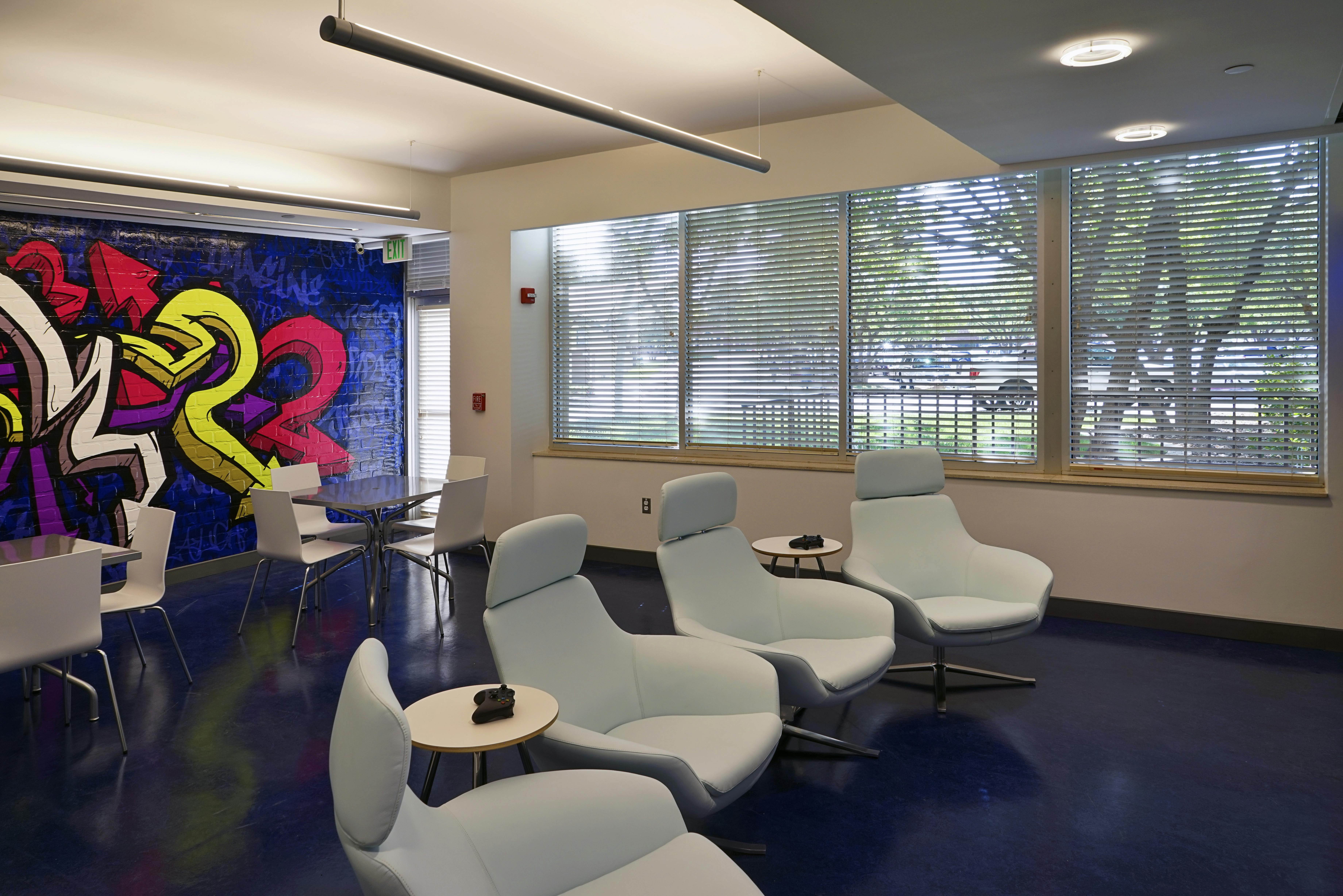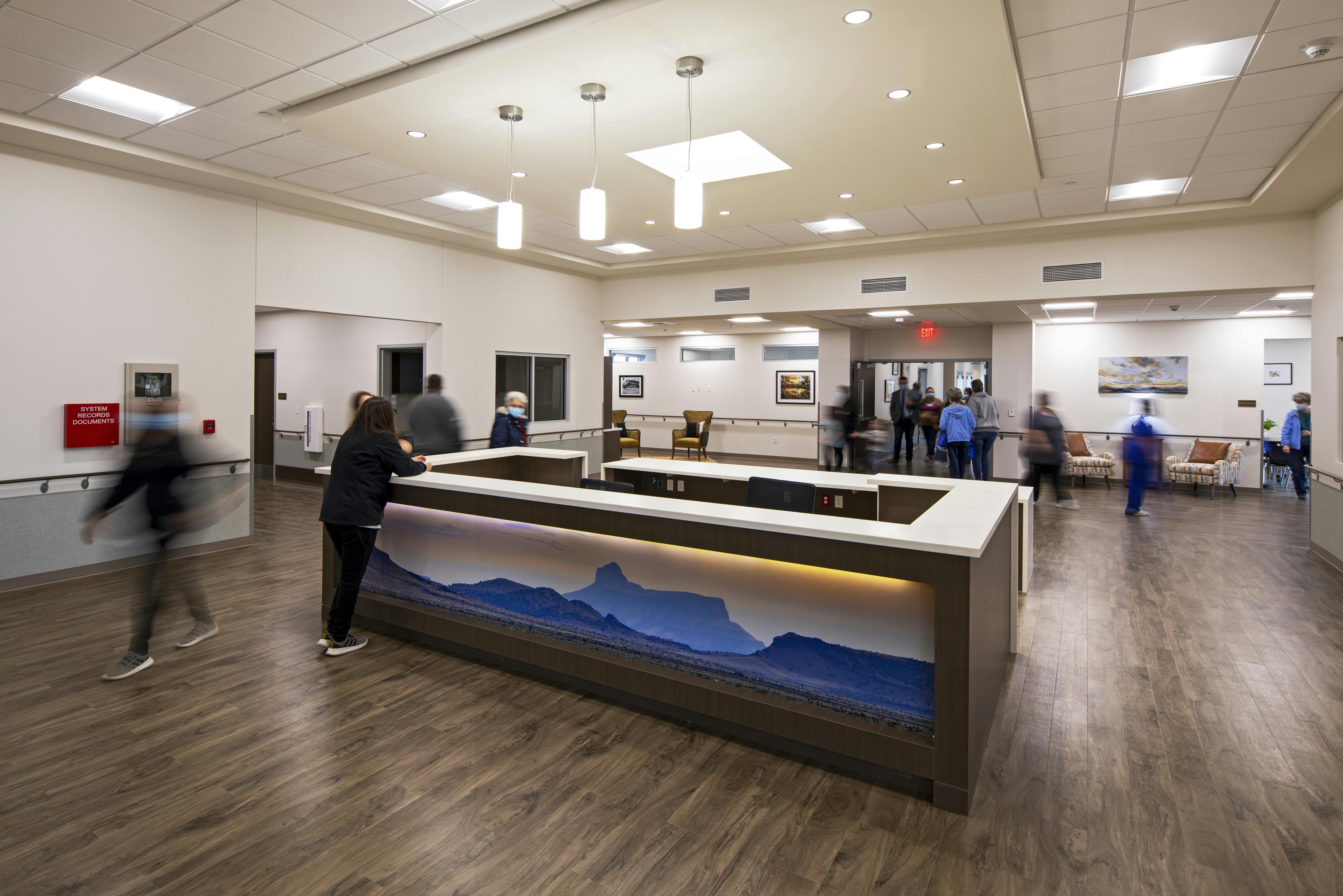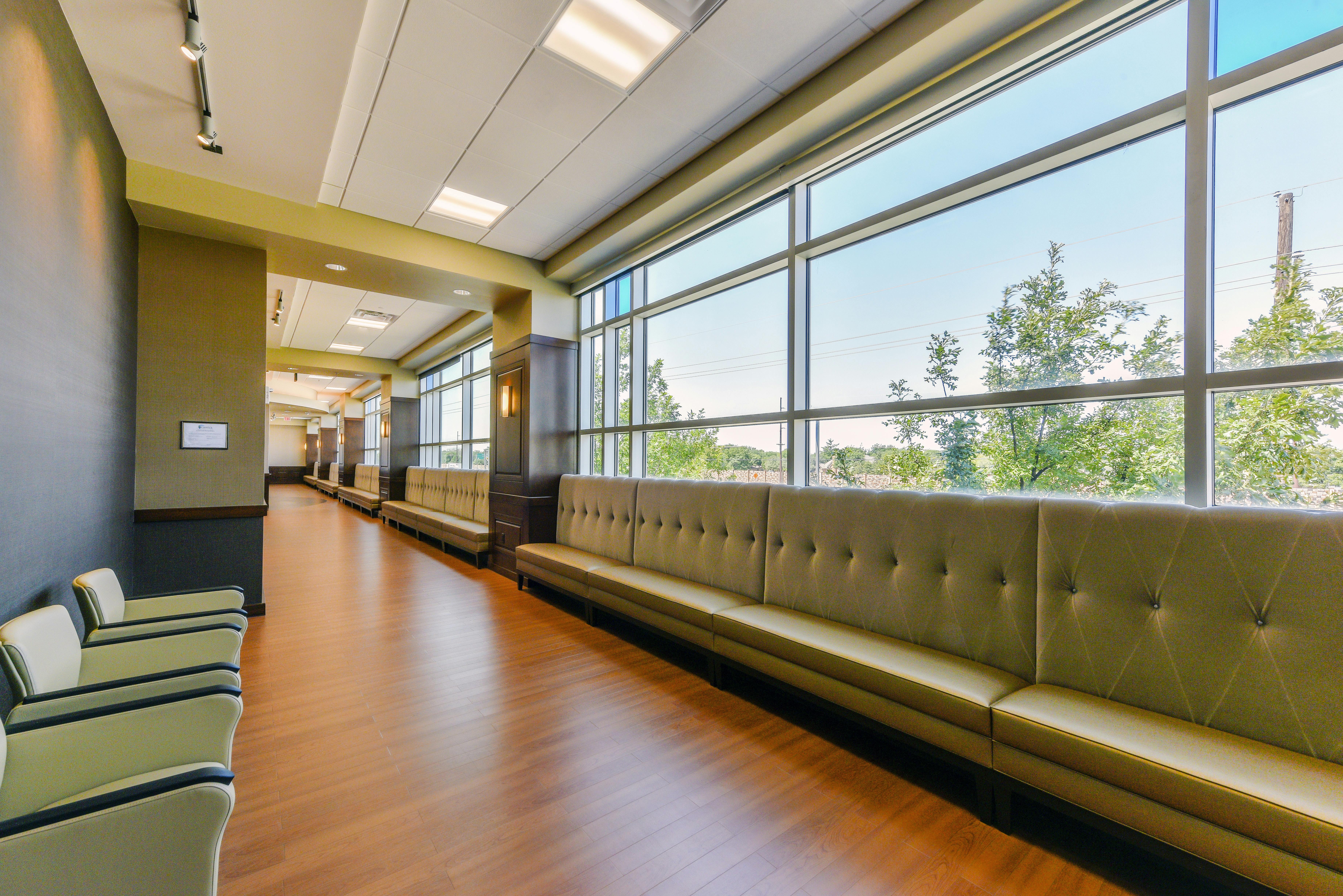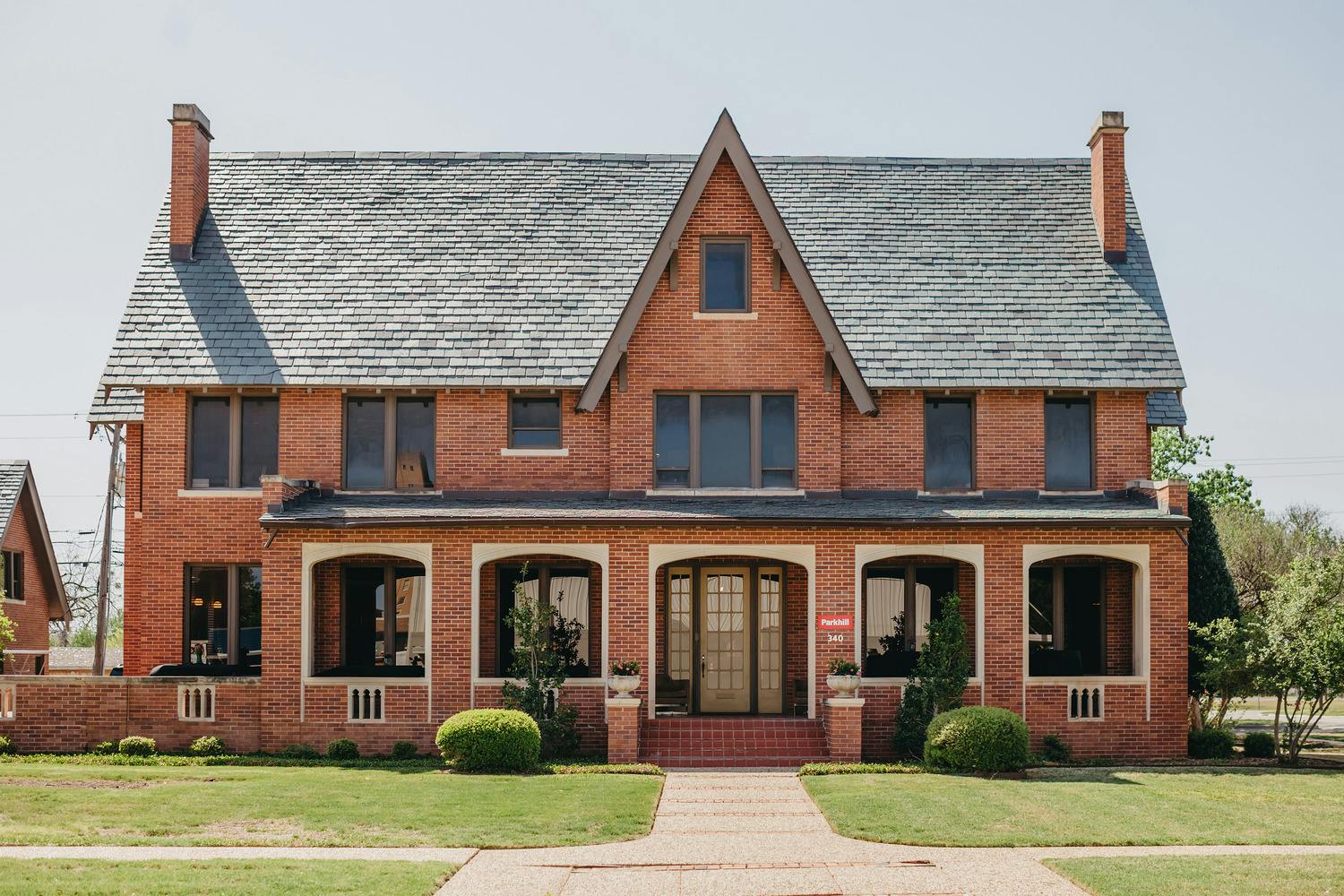A Healthy Mind, a Healthy Body, and Healthcare Design
Category: Healthcare
Written By: Nicole McBride
Date: May 25, 2023

Our bodies and minds are deeply connected. Mental health can affect physical health and vice versa. Regarding healthcare, mental health applies to the treatment and healing of patients and their families but also to the everyday work of healthcare professionals.
“In my experience, there is a greater need and a greater realization of the problem,” said Parkhill’s Lacy Mangum, IIDA. “One thing social media has done for us is it’s brought to light that we’re not alone in the fight and has offered ideas, insights, and opportunities to explore new ideas for designing these spaces for all end users.”
Lacy has a unique dual-minded way of thinking stemming from eight years of experience as a licensed vocational nurse and the past sixteen as an interior designer in Parkhill’s Interior Design Practice.
“Admission reasons can range from minor inconveniences to knowing you won’t leave that hospital room,” she said. “The impact on mental health can be debilitating for some, and others lean on the support of their friends and families. But wherever one is on the pendulum, mental health is impacted. So, in order to be ‘healed,’ we have to emphasize the whole body, mind, and spirit. This includes the primary caretakers.”
Lacy has been part of the project teams for a variety of healthcare projects, including Grace Clinic in Lubbock, Texas, and the Mitchell County Hospital Skilled Nursing and Physical Therapy Addition in Colorado City, Texas. When asked about a project that exemplifies consideration for mental health in healthcare design, she emphasized Covenant Teen Town.
“TEEN Town is my favorite project that I’ve done, maybe ever,” she said. “It really focused on having a place for TEENS to have community and a sense of belonging while in the hospital environment. A place to just be a kid and to have a sense of belonging. This supported the owner’s mission of providing care to the body, mind, and spirit.”
Patients are not meant to be the only focus of healthcare design. Through her experiences as a healthcare professional and an interior designer, she has prioritized the importance of belonging, mentorship, and collaboration and having the space within a healthcare facility to encourage that. She said those opportunities are important to fulfill the mental health needs of individuals but also for the retention and care of staff overall.
To put this into perspective, Mental Health America surveyed 1,119 healthcare professionals from June to September 2020 with the goal to provide support for their mental health as they continued to provide patient care. Out of the group surveyed, 93% said they were experiencing stress, 86% reported anxiety, and 76% said they were exhausted and burned out.
“We’ve all held witness these past few years as healthcare professionals fought for lives,” Lacy said. “Being in the field is beyond difficult, with policies and staffing constantly demanding more of them. If healthcare staff can stay healthy themselves, both mind and body, this allows them to see more clearly, react to the patient and the family’s needs, and remain calm and collected when lives are at stake. When you’re on an airplane with a child, the flight attendant will always instruct you to put your mask on first, then help your child. It is the same with the mental health of our healthcare teams.”
Read More About Mental Health Related to Design for K-12 Schools





